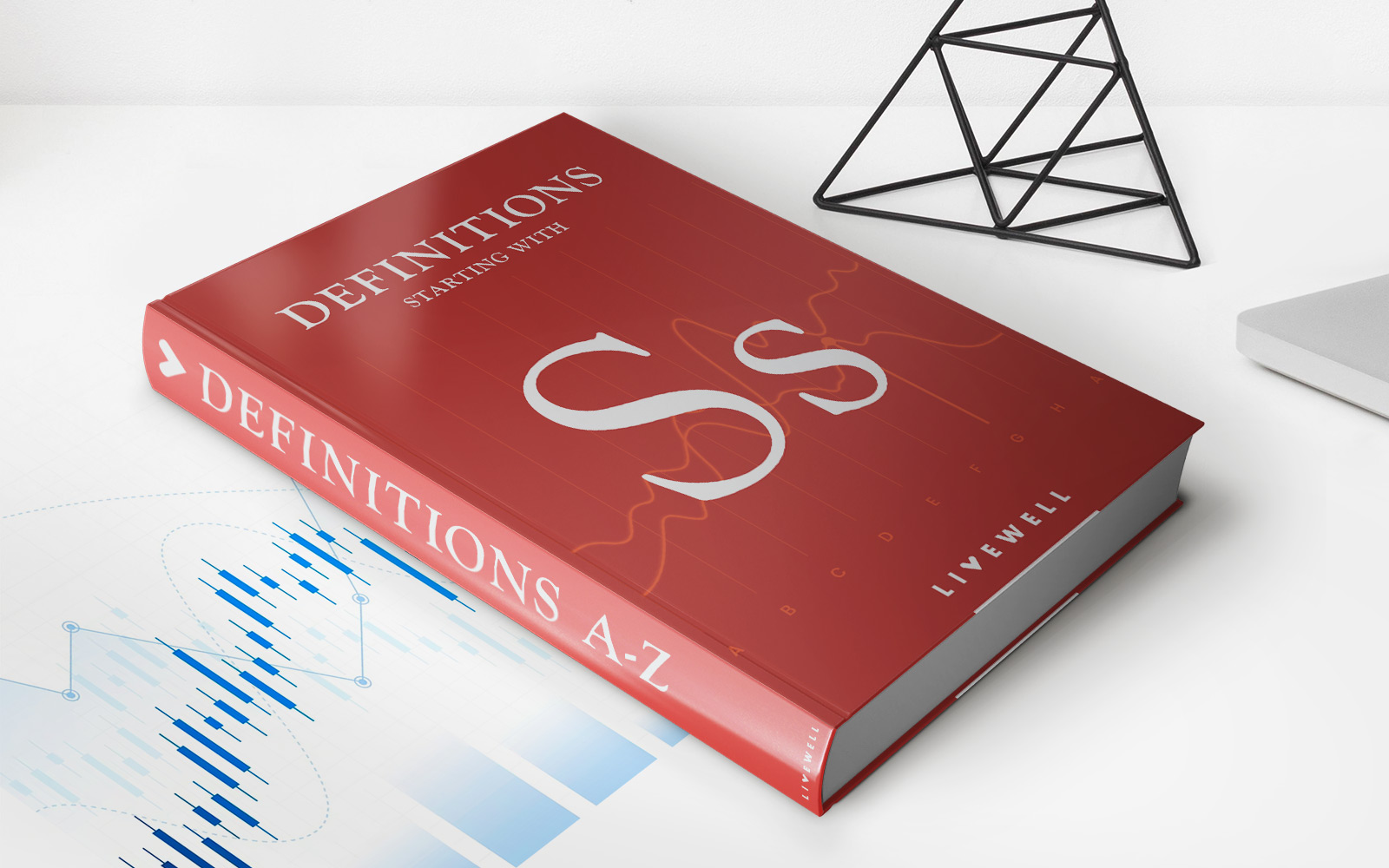

Finance
How To Use Life Insurance While Alive
Published: November 9, 2023
Learn how to utilize life insurance to secure your finances while you're still alive. Discover smart financial planning strategies to maximize the benefits of life insurance.
(Many of the links in this article redirect to a specific reviewed product. Your purchase of these products through affiliate links helps to generate commission for LiveWell, at no extra cost. Learn more)
Table of Contents
- Introduction
- Understanding Life Insurance
- Importance of Life Insurance While Alive
- Types of Life Insurance
- How to Use Life Insurance While Alive
- Cash Value Accumulation
- Policy Loans
- Surrendering the Policy
- Using Life Insurance as Collateral
- Accelerated Death Benefits
- Living Benefits Riders
- Estate Planning with Life Insurance
- Conclusion
Introduction
Life insurance is a crucial financial asset that provides protection and peace of mind to individuals and their loved ones. While many people associate life insurance solely with death benefits, it can also serve as a valuable asset during an individual’s lifetime. Understanding how to use life insurance while alive can open up a world of financial opportunities and security.
In this article, we will explore the importance of life insurance while alive and discuss various ways to effectively utilize life insurance as a financial tool. Whether you already have a life insurance policy or are considering purchasing one, this article will provide valuable insights on how to maximize its benefits during your lifetime.
Life insurance serves as a financial safety net for individuals and their families, providing much-needed protection in the event of the policyholder’s death. However, life insurance policies can offer additional benefits beyond the traditional death benefit. By understanding and utilizing these benefits, policyholders can create financial strategies that can strengthen their financial well-being.
Throughout this article, we will explore different types of life insurance policies and discuss how each can be used to your advantage while you are still alive. From cash value accumulation to living benefits riders and estate planning, there are diverse ways to leverage your life insurance policy to meet your financial goals and address your specific needs.
Whether you are looking for a way to accumulate savings, require funds for emergencies, or want to protect your assets and ensure a smooth transition of wealth to your heirs, utilizing your life insurance while you are alive can provide valuable solutions.
Now, let’s dive into the various aspects of understanding and using life insurance while alive, so you can harness the full potential of this financial asset.
Understanding Life Insurance
Before delving into the ways to use life insurance while alive, it is essential to have a clear understanding of what life insurance is and how it works. Life insurance is a contract between an individual, known as the policyholder, and an insurance company. In exchange for regular premium payments, the insurance company provides a death benefit to the policyholder’s beneficiaries upon their death.
Life insurance can be classified into two main types: term life insurance and permanent life insurance. Term life insurance provides coverage for a specific period, typically 10, 20, or 30 years. It is a straightforward and more affordable option, making it a popular choice for individuals with temporary financial obligations, such as paying off a mortgage or providing for young children.
Permanent life insurance, on the other hand, offers coverage for the policyholder’s entire life. It consists of two main components: a death benefit and a cash value component. These policies, such as whole life, universal life, and variable life insurance, are designed to provide lifelong coverage and accumulate cash value over time.
The cash value component of permanent life insurance policies sets them apart from term life insurance. A portion of the premium payments is allocated to build up cash value, which grows over time on a tax-deferred basis. This cash value can be accessed during the policyholder’s lifetime and used for various financial needs.
It’s important to note that life insurance policies have different premium structures, coverage amounts, and features. Consulting with a financial advisor or insurance professional can help you determine the most suitable type and coverage amount based on your specific needs and financial goals.
Understanding the various types of life insurance policies and their components is crucial when considering how to use life insurance while alive. Different policies offer different benefits and features that can align with your financial objectives and provide flexibility for accessing funds when needed.
Now that we have a foundational understanding of life insurance, let’s explore the importance of utilizing life insurance while alive and the opportunities it presents.
Importance of Life Insurance While Alive
While life insurance is primarily associated with providing financial protection in the event of the policyholder’s death, its importance extends beyond that. Life insurance can be a valuable asset while you are alive, offering numerous benefits and opportunities to enhance your financial well-being.
One of the key reasons life insurance is important while alive is its ability to provide financial security and stability. Life is unpredictable, and unexpected events such as disability, critical illness, or job loss can jeopardize your financial situation. Life insurance policies with living benefits or riders can provide a safety net during challenging times, offering financial support and helping meet day-to-day expenses.
Additionally, life insurance can serve as a powerful tool for saving and accumulating wealth. Permanent life insurance policies, such as whole life or universal life insurance, have a cash value component that grows over time. This cash value can be accessed during your lifetime and used as a source of emergency funds, for educational expenses, or as a supplement to retirement income.
Moreover, life insurance can be used to protect your assets and preserve your estate. If you have substantial wealth or valuable assets, such as a business or real estate properties, life insurance can be utilized to ensure the smooth transition of wealth to your heirs. By integrating life insurance into your estate planning, you can provide liquidity to cover estate taxes, settle outstanding debts, and leave a lasting legacy for your loved ones.
Life insurance also offers unique borrowing opportunities through policy loans. Policyholders can borrow against the cash value of their life insurance policies, often at favorable interest rates. These loans can be used for various purposes, such as funding education, starting a business, or making home improvements, providing a valuable source of accessible funds.
Furthermore, life insurance can play a significant role in charitable giving. Through a life insurance policy, you can name a charity as a beneficiary, ensuring that your philanthropic goals are fulfilled even after your passing. This allows you to make a lasting impact and support causes that are important to you.
By understanding the importance of utilizing life insurance while alive, you can make informed decisions about your financial future. Life insurance serves as a versatile tool that can provide financial security, save and accumulate wealth, protect your assets, and leave a lasting legacy.
Now, let’s explore the different types of life insurance policies that offer opportunities for using life insurance while alive.
Types of Life Insurance
When considering how to use life insurance while alive, it’s important to understand the different types of life insurance policies available. Each type offers unique features and benefits that can align with your financial goals and provide flexibility in accessing funds during your lifetime.
1. Term Life Insurance: Term life insurance provides coverage for a specific period, typically 10, 20, or 30 years. It offers a death benefit but does not accumulate cash value. Term life insurance is a more affordable option and is ideal for individuals with temporary financial obligations, such as paying off a mortgage or supporting young children.
2. Whole Life Insurance: Whole life insurance is a type of permanent life insurance that provides coverage for the policyholder’s entire life. It offers a death benefit and features a cash value component that grows over time. Whole life insurance premiums remain level throughout the policy’s duration, and the cash value can be accessed through withdrawals or policy loans.
3. Universal Life Insurance: Universal life insurance is another type of permanent life insurance that offers flexibility in premium payments and death benefit amounts. It also includes a cash value component that earns interest over time. Policyholders can adjust their premium payments and use the accumulated cash value to pay for premiums or withdraw funds when needed.
4. Variable Life Insurance: Variable life insurance allows policyholders to invest the cash value component in various investment options, such as stocks and bonds. The policy’s death benefit and cash value can fluctuate based on the performance of these investment options. Variable life insurance provides the potential for higher returns but also carries more investment risk.
5. Indexed Universal Life Insurance: Indexed universal life insurance combines elements of traditional universal life insurance with the potential for additional growth based on the performance of an underlying stock market index. It offers flexibility in premium payments and allows policyholders to participate in market gains while protecting them from market losses.
Each type of life insurance offers different advantages and features that can be used to meet your financial needs. Determining the most appropriate type of life insurance for you requires careful consideration of your financial goals, risk tolerance, and budgetary constraints. Consulting with a financial advisor or insurance professional can help you navigate the options and choose the best policy for your specific circumstances.
Now that we have explored the different types of life insurance, let’s delve into the various ways you can effectively use life insurance while alive.
How to Use Life Insurance While Alive
Life insurance can serve as a valuable financial tool while you are alive, offering various ways to meet your financial needs and goals. Let’s explore the different strategies and options for utilizing life insurance effectively:
- Cash Value Accumulation: Permanent life insurance policies, such as whole life or universal life insurance, have a cash value component that grows over time. You can contribute to this cash value through premium payments, and the funds accumulate on a tax-deferred basis. You can use the accumulated cash value to supplement your retirement income, fund emergencies, or pursue other financial opportunities.
- Policy Loans: If you need access to cash, you can borrow against the cash value of your permanent life insurance policy. Policy loans typically offer lower interest rates compared to traditional loans and do not require a credit check. You can utilize the loan proceeds for various purposes, such as paying for education, making home improvements, or starting a business.
- Surrendering the Policy: If you no longer need the life insurance coverage or wish to terminate your policy, you can surrender it and receive the accumulated cash value. However, surrendering the policy means forfeiting the death benefit, so careful consideration should be given before making this decision.
- Using Life Insurance as Collateral: Life insurance policies can be used as collateral for obtaining loans from financial institutions. By pledging your life insurance policy, you can secure lower interest rates and access funds for different purposes, such as purchasing a home or financing a business.
- Accelerated Death Benefits: Some life insurance policies offer accelerated death benefits, which allow you to receive a portion of the death benefit while you are still alive if you are diagnosed with a terminal illness or a critical illness. These funds can be used to cover medical expenses, seek specialized treatments, or fulfill any other financial needs during a challenging time.
- Living Benefits Riders: Living benefits riders are additional features that can be added to a life insurance policy to provide extra coverage and financial assistance while you are alive. These riders may include provisions for long-term care benefits, disability income benefits, or chronic illness benefits. They offer added protection and financial support in case of unexpected events.
- Estate Planning with Life Insurance: Life insurance can play a crucial role in estate planning. By designating your beneficiaries strategically and integrating life insurance into your estate plan, you can ensure the smooth transition of assets to your loved ones. Life insurance can provide liquidity to cover estate taxes, settle outstanding debts, and preserve your wealth for future generations.
These are just a few examples of how life insurance can be utilized while you are alive. The specific options available to you may vary depending on the type of life insurance policy you have and the provisions included in your policy. It is advisable to consult with a financial advisor or insurance professional to explore the options that best suit your financial goals and circumstances.
By understanding and effectively using life insurance while alive, you can optimize the benefits of this valuable financial tool and secure your financial future.
Cash Value Accumulation
Cash value accumulation is one of the key benefits of permanent life insurance policies, such as whole life or universal life insurance. These policies have a cash value component that grows over time, providing an opportunity for policyholders to accumulate savings within the policy.
When you make premium payments for your permanent life insurance policy, a portion of those payments goes into building the cash value. This cash value grows on a tax-deferred basis, meaning you don’t have to pay taxes on the growth until you withdraw the funds. Over time, the cash value accumulates and can be used as a valuable financial asset while you are alive.
The accumulated cash value can be accessed in several ways:
- Withdrawals: You can make partial withdrawals from the cash value of your policy. This can be useful for funding unexpected expenses, making a down payment on a home, or covering educational costs. Keep in mind that withdrawals may reduce the death benefit and affect the policy’s cash value growth.
- Policy Loans: Instead of making a withdrawal, you can take out a policy loan against the cash value. Policy loans often come with lower interest rates compared to other types of loans, and you don’t need to go through a credit check. The loan can be used for various purposes, such as starting a business, paying for medical expenses, or funding a child’s education.
- Premium Payments: In some cases, policyholders can use the accumulated cash value to pay their premiums. This option can be particularly beneficial if you experience a temporary financial setback and need to redirect funds or if you want to ensure that the policy remains in force without additional out-of-pocket expenses.
- Supplemental Retirement Income: The cash value accumulated in your life insurance policy can serve as a source of supplemental income during retirement. You can withdraw or borrow from the cash value to supplement your other sources of retirement income, providing additional financial stability and security in your golden years.
It’s important to note that any withdrawals or loans made from the cash value will decrease the policy’s death benefit and may have tax implications. Therefore, it’s recommended to consult with a financial advisor or an insurance professional to understand the potential consequences and make informed decisions that align with your specific financial goals and needs.
By leveraging the cash value accumulation feature of your life insurance policy, you can harness the benefits of a valuable financial asset and enhance your overall financial well-being while you are alive.
Policy Loans
One of the ways to leverage your life insurance policy while you are alive is through policy loans. Policy loans allow you to borrow against the cash value of your permanent life insurance policy, providing you with access to funds when needed.
Here’s how policy loans work:
1. Borrowing from Cash Value: When you take out a policy loan, you are essentially borrowing money from the cash value that has accumulated in your life insurance policy. The loan amount is typically limited to a percentage of the policy’s cash value, and the actual terms and conditions may vary depending on the insurance company and the specific policy. The interest rates on policy loans are often lower compared to other types of loans, making them an attractive borrowing option.
2. Collateralized Loan: Policy loans are collateralized by the cash value of your life insurance policy. This means that the cash value serves as security for the loan. In case of default on the loan, the insurance company has the right to use the cash value to cover the outstanding balance. However, it’s important to note that any unpaid loan amount, including interest, will be deducted from the policy’s death benefit when the policyholder passes away.
3. Flexible Repayment: Policy loans offer flexibility in repayment. You can choose to repay the loan in regular installments or leave the loan outstanding and accrue interest. If you opt not to make regular payments, the outstanding loan balance and any accrued interest will be deducted from the death benefit payout when the policyholder passes away. It’s crucial to understand the loan terms and repayment options provided by your insurance company to make an informed decision.
4. Loan Purpose: Policy loans can be used for various purposes. Whether you need funds for education expenses, home renovations, debt consolidation, or any other financial need, a policy loan can provide a convenient and cost-effective solution. The loan proceeds are typically not subject to income tax, as they are considered a loan rather than taxable income.
It’s important to remember that policy loans, like any form of borrowing, come with certain considerations:
a) Impact on Death Benefit: Taking a policy loan reduces the death benefit of your life insurance policy. The outstanding loan amount, including any interest, will be deducted from the death benefit paid to your beneficiaries. Therefore, it’s essential to factor in the loan amount and potential impact on your intended financial protection for your loved ones.
b) Repayment Responsibility: If you do not repay the loan, the insurance company will deduct the outstanding balance and interest from the death benefit payout. It’s important to carefully consider your repayment strategy and ensure that you have a plan in place to repay the loan, should you opt not to make regular payments.
Policy loans can be a powerful tool for accessing funds when you need them, providing flexibility and convenience. However, it’s critical to consult with a financial advisor or insurance professional to fully understand the terms and consequences associated with policy loans and to make informed decisions that align with your financial goals and circumstances.
Surrendering the Policy
Another option for utilizing your life insurance policy while you are alive is surrendering the policy. Surrendering your policy means terminating it and receiving the accumulated cash value.
Here are some key points to consider when contemplating surrendering your policy:
1. Reasons for Surrender: There may be various reasons why you may choose to surrender your policy. You may no longer need the life insurance coverage or feel that it no longer aligns with your financial goals. Perhaps you have found alternative insurance coverage or have experienced a change in your circumstances where the policy is no longer necessary. It’s important to carefully weigh the benefits of surrendering the policy against any potential consequences.
2. Accumulated Cash Value: When you surrender your policy, you will receive the accumulated cash value. The cash value represents the savings portion of your policy, which has grown over time through premium payments and investment returns (if applicable). The cash value can be a valuable source of funds that can be used for various purposes, such as paying off debt, funding education, or investing in other financial opportunities.
3. Impact on Death Benefit: Surrendering your policy means forfeiting the death benefit coverage. This can have implications if you were relying on the policy as a source of financial protection for your loved ones. Consider whether you have alternative means of providing for your beneficiaries in the event of your passing, such as through other life insurance policies or accumulated assets.
4. Tax Implications: Surrendering a policy may have tax implications. The cash value received upon surrender is typically subject to income tax if it exceeds the total amount paid in premiums. Additionally, surrendering the policy may trigger a taxable event if the cash value growth is significant. It’s advisable to consult with a tax professional or financial advisor to understand the specific tax implications based on your circumstances and local tax laws.
5. Consider Alternatives: Before surrendering your policy, explore alternative options that may allow you to retain coverage or achieve your financial objectives without losing the death benefit protection. For example, you could explore the possibility of reducing the coverage amount to lower premiums or adjusting the policy’s features to better align with your needs.
Deciding whether to surrender your life insurance policy is a personal and financial decision that should be carefully evaluated. Understanding the potential impact on your financial situation, evaluating alternative options, and seeking advice from a financial professional can help you make an informed choice that aligns with your goals and circumstances.
It’s important to recognize that surrendering a life insurance policy should be considered as a last resort, as it permanently terminates the coverage and the financial protection it provides. Therefore, thoughtful consideration and consultation with experts are essential before making this decision.
Using Life Insurance as Collateral
Your life insurance policy can be utilized as collateral for obtaining loans from financial institutions. Using your policy as collateral can provide you with several advantages, including lower interest rates and potentially easier access to funds. Here’s how you can leverage your life insurance as collateral:
1. The Collateral Assignment: The first step in using your life insurance policy as collateral is to assign the policy as collateral to the lending institution. This process involves signing a collateral assignment agreement that grants the lender the right to claim the policy’s cash value in the event of loan default. The lender will be listed as the assignee, which means they have a legal claim to the cash value of the policy.
2. Lower Interest Rates: One of the main advantages of using life insurance as collateral is that it typically results in lower interest rates compared to unsecured loans. The insurance policy serves as a form of security for the lender, reducing their risk. As a result, they are more likely to offer lower interest rates, potentially saving you significant amounts of money over the life of the loan.
3. Easier Loan Approval: Loans secured by life insurance policies may be easier to obtain than traditional loans. Since the policy itself provides collateral, lenders may be more willing to offer loans, even if you have less-than-ideal credit or limited income. The cash value in the policy provides reassurance to the lender, increasing the likelihood of loan approval.
4. Flexible Use of Funds: The loan proceeds can be used for various purposes, such as financing a new business venture, purchasing a home, or investing in other opportunities. The funds obtained through the loan can help you achieve your financial goals without disrupting the growth or coverage of your life insurance policy.
5. Repayment Considerations: It’s important to bear in mind that if you default on the loan, the lender can claim the cash value of your life insurance policy. This may result in a reduction of the death benefit that will be paid to your beneficiaries. It’s crucial to thoroughly assess your ability to repay the loan to avoid any negative consequences on your life insurance coverage.
6. Professional Advice: Before using your life insurance policy as collateral, it’s advisable to consult with a financial advisor or an insurance professional. They can help you evaluate the terms and conditions of the loan, assess the impact on your policy’s coverage and cash value, and ensure that it aligns with your overall financial plan.
Using your life insurance policy as collateral for a loan can be a strategic financial move, providing you with access to funds at favorable terms. However, it’s important to understand the implications and obligations associated with using your policy as collateral and to carefully consider whether it is the right choice for your specific financial situation.
Accelerated Death Benefits
Accelerated death benefits are a valuable feature offered by some life insurance policies that allow policyholders to access a portion of the death benefit while they are still alive under certain qualifying circumstances. This can provide significant financial support during challenging times. Here’s what you need to know about accelerated death benefits:
1. Qualifying Circumstances: Accelerated death benefits are typically available to policyholders who are diagnosed with a terminal illness with a life expectancy of 12 to 24 months or who have a chronic illness that requires long-term care. Some policies may also include coverage for critical illnesses such as heart attack, stroke, or cancer.
2. Financial Assistance: By accessing a portion of the death benefit before passing away, policyholders can use the funds to cover medical expenses, seek specialized treatments, or fulfill any other financial needs that may arise during their illness. This can provide a much-needed financial lifeline during times of significant medical and financial burdens.
3. Tax Implications: In many cases, accelerated death benefits are tax-free. The IRS provides an exclusion for accelerated death benefits paid under a qualified life insurance policy. However, it’s important to consult with a tax professional to understand the specific tax implications based on your circumstances and local tax laws.
4. Reduction in Death Benefit: When you access accelerated death benefits, the amount received will be deducted from the total death benefit payable upon the policyholder’s passing. It’s essential to consider the impact on your intended financial protection for your beneficiaries and assess whether accessing the funds early aligns with your overall financial plan.
5. Policy Limitations: Not all life insurance policies offer accelerated death benefits, and the availability and terms may vary. It’s important to review your policy documents or consult with your insurance provider to confirm whether your policy includes this feature and the specific details and conditions for accessing the benefits.
6. Policyholder Flexibility: Some policies offer flexibility in choosing when and how to receive accelerated death benefits. Policyholders may have the option to receive a lump sum payment, regular installments, or a combination of both, depending on their needs and preferences.
7. Consultation and Documentation: To access accelerated death benefits, policyholders generally need to provide medical documentation and meet the specific criteria outlined in their policy. It’s important to consult with your insurance provider or financial advisor to understand the process and requirements for accessing these benefits.
Accelerated death benefits can provide critical financial support to policyholders and their families during times of need. However, it’s essential to review your policy carefully, assess the impact on your beneficiaries, and consider your individual circumstances before deciding to access accelerated death benefits.
Living Benefits Riders
Living benefits riders are additional features that can be added to a life insurance policy to provide extra coverage and financial assistance while the policyholder is alive. These riders enhance the policy’s flexibility and offer additional protection beyond the traditional death benefit. Here’s what you should know about living benefits riders:
1. Types of Living Benefits Riders: There are various types of living benefits riders that can be included in a life insurance policy. Some common ones include Critical Illness Riders, Chronic Illness Riders, and Long-Term Care Riders. Each rider provides coverage for different scenarios and can offer financial support during times of illness or medical hardship.
2. Critical Illness Riders: Critical Illness Riders provide a lump sum payment if the policyholder is diagnosed with a covered critical illness, such as cancer, heart attack, stroke, or organ failure. This rider can help offset medical expenses, cover treatment costs, or provide financial relief if the policyholder is unable to work during the illness.
3. Chronic Illness Riders: Chronic Illness Riders offer benefits if the policyholder experiences a qualifying chronic illness that involves a loss of independence or the need for long-term care services. This rider can help cover the cost of in-home care, assisted living facilities, or nursing home care, providing financial support during a challenging time.
4. Long-Term Care Riders: Long-Term Care Riders specifically focus on providing coverage for long-term care needs that may arise in later stages of life. This rider can help pay for assisted living, nursing home care, or home healthcare services, allowing the policyholder to maintain their quality of life without depleting their savings or burdening loved ones with the financial responsibility of long-term care.
5. Benefits of Living Benefits Riders: Living benefits riders offer policyholders financial protection and peace of mind during times of medical or health-related challenges. These riders provide access to funds that can help pay for medical treatments, cover daily living expenses, or hire qualified caregivers, ensuring that the policyholder’s financial well-being is not entirely dependent on personal savings or other sources of income.
6. Policyholder Flexibility: The flexibility of living benefits riders can vary depending on the specific terms outlined in the policy. Some riders may provide a lump sum payment upon diagnosis, while others may offer regular installments or allow the policyholder to choose between different payout options. Reviewing the terms of the living benefits riders and understanding the available options is essential to make informed decisions based on individual needs.
7. Adding Living Benefits Riders: Living benefits riders can often be added to a life insurance policy at the time of purchase or through a policy modification. It’s important to consult with an insurance professional or financial advisor to determine the suitability of adding a rider based on your goals, health considerations, and financial circumstances.
Living benefits riders can significantly enhance the value and flexibility of a life insurance policy. They provide protection and financial assistance when policyholders need it most, addressing medical or health-related challenges that can arise during their lifetime.
Estate Planning with Life Insurance
Life insurance plays a critical role in estate planning as it provides a means to ensure the smooth transition of wealth to your heirs and preserve your legacy. By integrating life insurance into your estate plan, you can address various financial objectives and create a lasting impact. Here’s what you need to know about using life insurance for estate planning:
1. Covering Estate Taxes: Estate taxes can significantly diminish the value of your estate. Life insurance can be utilized to cover these taxes, ensuring that your beneficiaries receive the full value of your estate. By strategizing the ownership and beneficiary designations of the policy, you can minimize tax liabilities and provide necessary liquidity to settle estate tax obligations.
2. Equalizing Inheritances: Life insurance can help ensure fairness and equality in the distribution of your assets. If you have complex assets, such as a closely-held business or real estate, you can designate the policy proceeds to a specific beneficiary who may not have a significant interest in those assets. This helps prevent asset liquidation and facilitates an equal distribution of wealth among your heirs.
3. Providing for Dependents: If you have dependents, such as young children or disabled family members, life insurance can serve as a financial safety net. The death benefit can provide for their ongoing care and support, ensuring they are taken care of financially in your absence.
4. Covering Outstanding Debts: Life insurance proceeds can be used to settle any outstanding debts or liabilities, relieving your loved ones from the burden of repaying those obligations. This can help preserve your estate and prevent assets from being sold or liquidated to cover debts.
5. Creating a Charitable Legacy: Life insurance allows you to leave a lasting legacy by designating a charitable organization as a beneficiary. By making a charity the recipient of your policy’s death benefit, you can make a meaningful impact on causes that are important to you, while also potentially obtaining tax advantages through charitable deductions.
6. Ensuring Business Succession: If you own a business, life insurance can be used in a buy-sell agreement to facilitate a smooth transition of ownership in the event of your death. The death benefit can provide the necessary funds for the remaining business partners to buy out your shares, ensuring the continuity and stability of the business.
7. Considering Irrevocable Life Insurance Trusts (ILITs): An ILIT is a trust that owns the life insurance policy on your behalf. It can help minimize estate taxes and provide more control over the distribution of the life insurance proceeds. By keeping the policy outside of your estate, the death benefit can be passed on to your beneficiaries free of estate taxes.
When utilizing life insurance for estate planning, it’s crucial to work with an experienced estate planning attorney or financial advisor who can guide you through the process. They can help determine the optimal strategies, navigate the legal and tax implications, and ensure that your intentions are effectively reflected in your estate plan.
By incorporating life insurance into your estate planning, you can protect your assets, provide for your loved ones, support charitable causes, and leave a lasting legacy for future generations.
Conclusion
Utilizing life insurance while you are alive can provide you with invaluable financial benefits and security. Life insurance is not just a tool for providing death benefits to beneficiaries; it also offers numerous opportunities to support your financial goals and address your specific needs. Understanding the various ways to use life insurance while alive empowers you to make informed decisions that can enhance your financial well-being.
We explored several strategies for leveraging life insurance while alive, including cash value accumulation, policy loans, surrendering the policy, using life insurance as collateral, accessing accelerated death benefits, incorporating living benefits riders, and integrating life insurance into estate planning.
By accumulating cash value within permanent life insurance policies, you can grow savings over time on a tax-deferred basis and access funds for emergencies, retirement income supplementation, or other financial opportunities. Policy loans offer convenient borrowing options at lower interest rates, utilizing the cash value as collateral.
While surrendering a policy should be a careful decision, it allows you to receive the accumulated cash value and reassess your insurance needs. Using life insurance as collateral provides favorable terms for obtaining loans from financial institutions.
Accelerated death benefits and living benefits riders offer financial assistance in cases of terminal or chronic illness and provide coverage for critical or long-term care needs. Integration of life insurance into estate planning allows for the efficient transfer of wealth, covering estate taxes, equalizing inheritances, and ensuring a legacy through charitable giving.
In conclusion, life insurance is a multifaceted financial tool that can support your needs and goals during your lifetime. By leveraging the various options available, you can maximize the benefits of life insurance while ensuring financial security for yourself and your loved ones.
Consulting with a knowledgeable financial advisor or insurance professional is essential to fully understand the implications, terms, and conditions of your specific life insurance policy and guide you in making the most appropriate choices based on your individual circumstances.
Remember, life insurance serves not only as a safety net for your beneficiaries but also as a valuable asset that can enhance your financial stability and provide a solid foundation for your future financial journeys.














